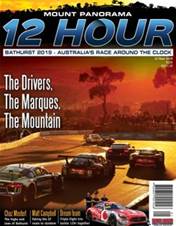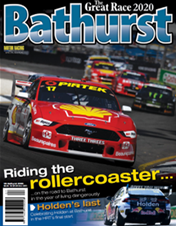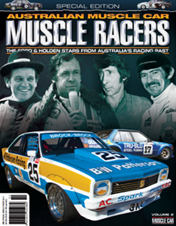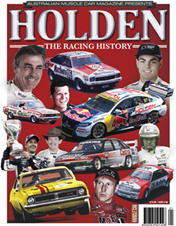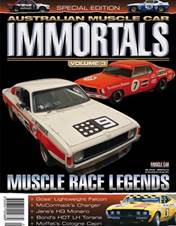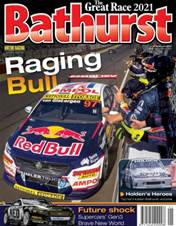Move over Rover
This is the story of a cat (a Big Cat) that could have been a dog. As John McCormack revealed in his Muscle Man profile in AMC #42, when the time came to construct a new Sports Sedan to replace his legendary Valiant Charger Repco-Holden, his sponsor, Unipart, wanted him to build a Rover SD1.
“I said no to that,” McCormack told AMC.

The idea to build a Jaguar XJS Sports Sedan came to him over the October long weekend in 1978, during the drive to Sydney from Bathurst. The Formula 5000 and Sports Sedan star had just made his Bathurst 1000 debut, sharing the driving with Ron Dickson in the Pioneer Falcon XC.
For the trip back to Sydney to catch an early-morning flight home to Adelaide, McCormack was at the wheel of a Jaguar XJS press car. It was 3.00am on a deserted Great Western Highway. The blanket 100km/h speed limit in NSW was still a year away, so naturally McCormack let the Big Cat have its head.
“There was no one else on the road, and I’m doing about 140mph (225km/h), and the thing is whisper quiet and rock steady… I’m thinking, ‘this is the one to have’. Because it’s a high-speed car, I knew it would have seen a wind tunnel – it had to be stable at high speed.”
This was a busy time for McCormack. That year he was locked in battle for the Australian Drivers’ Championship in his Unipart-sponsored ex-F1 McLaren 4.9-litre Leyland V8 Formula 5000 against Graham McRae’s 5.0-litre Chev-powered car. He was also preparing to take the McLaren to the US to compete in the reborn Can-Am Series for Formula 5000 cars with enclosed sportscar-style bodywork.
“I was looking to scale back my open-wheeler racing but first I wanted to have a look at the US and see if I could see out my days there, maybe get a drive in an oval car. We put a body on the M23 for the Can-Am, but the decision to do the Sports Sedan was made before I went over there,” he relates.
A Rover SD1 as a serious Sports Sedan frontrunner might seem a bit fanciful today, but it wasn’t an idea without appeal. One important attraction was that it was what McCormack’s sponsor wanted. Another was that McCormack had a ready-made suitable engine in the form of the Leyland P76 Formula 5000 engine which he himself had developed.
“John Shingleton, who was the Jaguar-Rover Australia director, had the idea to use a Rover SD1to promote the Rover line. But I didn’t want to go with the Leyland engine, because of its size. It started off as a 3.5-litre and we got it up to nearly five litres. But we couldn’t have increased it much further. When I was racing the Charger, my main opposition all had six-litre engines. Ours was only five litres. This is something that’s sometimes overlooked.
“With the Jaguar, because it was a 5.3-litre engine – ie: over five-litres – under the regulations I could take it to six litres. You couldn’t do that with the Leyland V8, and that’s why I suggested to John that I’d prefer to do a Jaguar.”

Shingleton was persuaded, and as a result the project would enjoy a level of factory support – something which would even extend as far as Jaguar in the UK.
For engineer/racing driver John McCormack, it was a simple case of the XJS being the car which met the requirements.
“I just knew that I had an engine I could take to six litres; I had essentially a sports car with a low-profile body that was aerodynamically good; I had a sponsor who was keen. It was just a matter of making it work.”
In essence, the Unipart Jaguar XJS followed a similar design philosophy to the Charger, but with a couple of key differences. One, of course, was the longer, V12 engine. The other was the drivetrain layout.
The rule in Sports Sedans which required the Charger to have its gearbox located behind the engine had been relaxed in the intervening years, so that for the Jag McCormack was free to run a straight Formula 5000-style transaxle gearbox/final drive assembly in the rear, without having to resort to running a pair of Hewland DG300 transaxle housings – one behind the engine to house the gearbox and another (sans gearbox) at the rear carrying the final drive, as had been the case with the Charger.
The chassis was a tube-steel spaceframe. It was designed and built by Simon Aram (who’d been a key member of McCormack’s race team for five years, on the Elfin F5000s as well as the Charger and the McLaren) and Bernie Pfitzner.
“Bernie was a motor racing tragic,” says McCormack, “and he had his own machine
shop. He and Simon got together, and Simon came up with the idea of the Develco Sports Sedan chassis. It was designed in such a way that, with minor variations to dimensions, it could go in under any car. They did a couple of Commodores and some other cars, including Dave Jarrett’s Camaro, Clem Smith’s Charger and the Jaguar.”
[Bernie Pfitzner’s son, Simon, has inherited his late father’s skills and today runs Pfitzner Performance Gearboxes (PPG), exporting gearboxes of his design throughout the world. He has also inherited Bernie’s passion for Sports Sedans and has purchased and restored a number of them.]
As was the case with all good Sports Sedans, the V12 engine was moved right back inside the cabin. A Develco-made bellhousing on the front of the transaxle carried the alloy flywheel, clutch and starter motor, as well as accommodating the high-pressure fuel pump. The transaxle was connected to the back of the engine by a captive live tailshaft.

You have reached an article available exclusively to Premium members.
JOIN FROM AS LITTLE AS $6.66 A MONTH* FOR INSTANT ACCESS.
Already a member? Log in
* Billed annually at $79.90






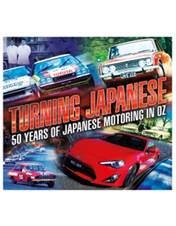
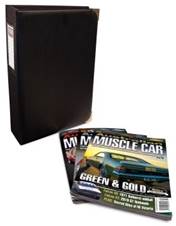
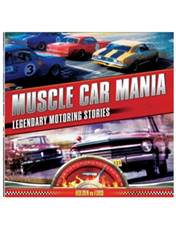

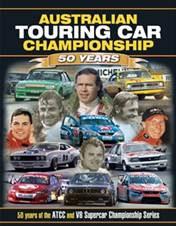
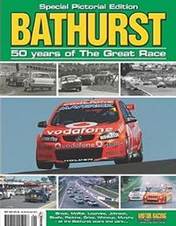
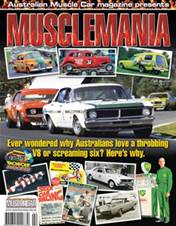
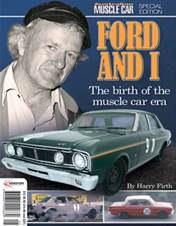
.jpg&q=70&h=226&w=176&c=1&s=1)
